 Facebook
Facebook
 X
X
 Instagram
Instagram
 TikTok
TikTok
 Youtube
Youtube
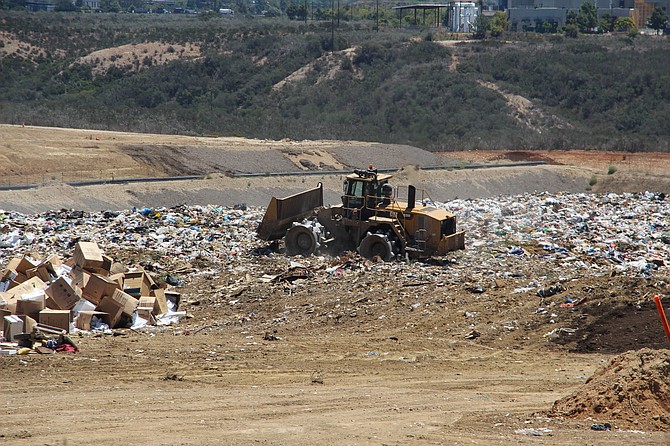
With the post-summer wind direction about to shift from east to west, the city and county are working overtime to solidify a plan to quell odor complaints that skyrocket between November and April against Miramar Landfill. Proposed measures have deadlines ranging from September 2017 to February 2019.
The proof of how well early measures work may be known this Thanksgiving if downwind residents who lodged complaints in 2016 do not do so again this Thanksgiving.
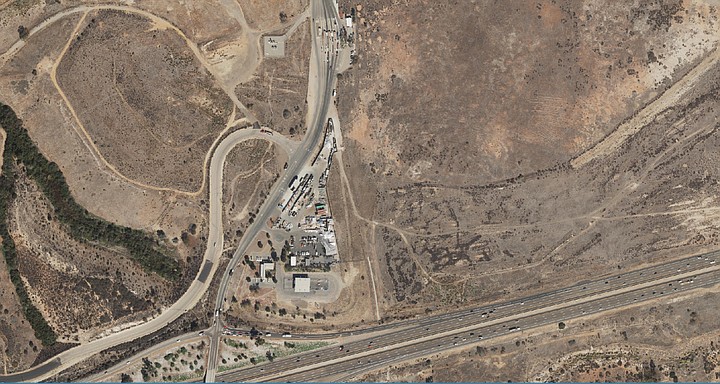
The Miramar Landfill opened in 1959 — operating the southern portion until 1973 (14 years), the northern portion from 1973 to 1983 (10 years), and the current western portion, still in operation, opened in 1983 (34 years and counting). The landfill has had substantially more complaints in the past couple years than in the past several decades, said the city.
Complaints that poured into the air pollution control district in 2016 led to a citation against the city for nuisance odors. The citation was settled in July 2016 via the city cutting a $15,000 check to the county.
More complaints followed once the winds changed direction that fall, which led to a May 2017 nuisance abatement hearing.
At the May hearing, the air pollution control district hearing board told the city to come up with a plan to quell odors. Boardmembers stated, after hearing residents speak, it was obvious that something changed three years ago and the city's job was to figure out what that was before the winds changed directions. The city was ordered to appear again in July for a status update and the abatement hearing was continued until August.

At the August status update, Mario Sierra, director of the city's environmental services department, presented key conditions to be incorporated into a stipulated agreement between the city and county — meant to stave off that abatement-order hearing.
Half of the ten key conditions are landfill-gas-related. One condition assures all future contracts will comply with environmental laws (deadline: January 1, 2019). A proposed two-phase expansion of the landfill gas-collection system would nearly double gas collection by December 31, 2018 — the idea being that more gas moving through the system equals less odors.
Another condition is the possibility of integrating the gas-collection system of an adjacent property into the Miramar system (a report on this is due December 31, 2017 — if moving forward, a filed application is due January 31, 2018).
By December 31, 2018, the city promises to evaluate the integrity of the gas-collection system and advise the county on an action plan by February 28, 2019.
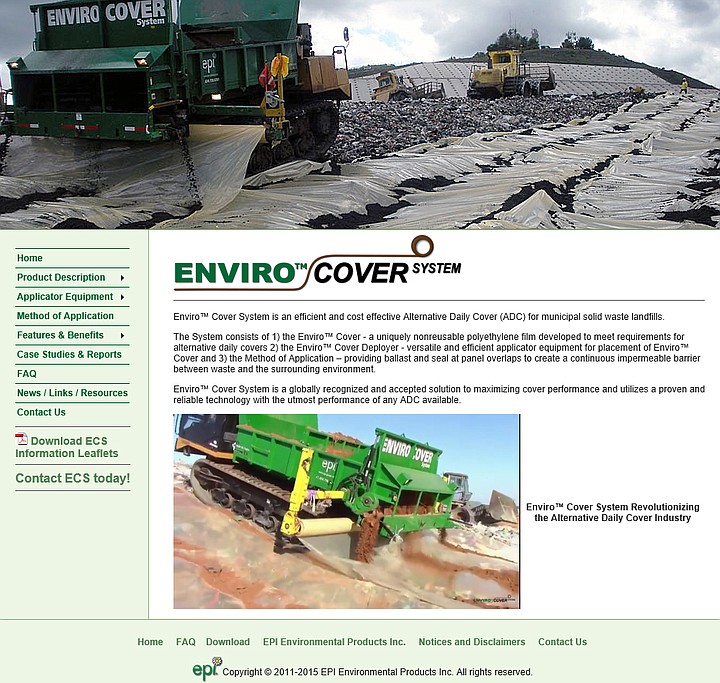
Four of the ten measures involve how landfill waste is covered. Beginning this year, from October 15 through May 1, the city will ditch the newer pancake-lift method (which compacts trash in flat horizontal stackable “pancakes”) for the formerly used slope-fill method (which covers trash with dirt on slopes) — the latter reduces the surface area of exposed waste and thus odors. The pancakes will return between May and October.
Beginning September 30, the city will only use recently purchased tarps to cover the landfill. No later than January 31, 2018, a new Enviro Cover System will be used between October 1 and May 1. The city will use dirt with the new tarps.
Enviro Cover is a one-use tarp system applied anew nightly. The next morning, new trash is dumped atop the thin tarps, which are designed to biodegrade easily — though promises to be impermeable for its one time use.
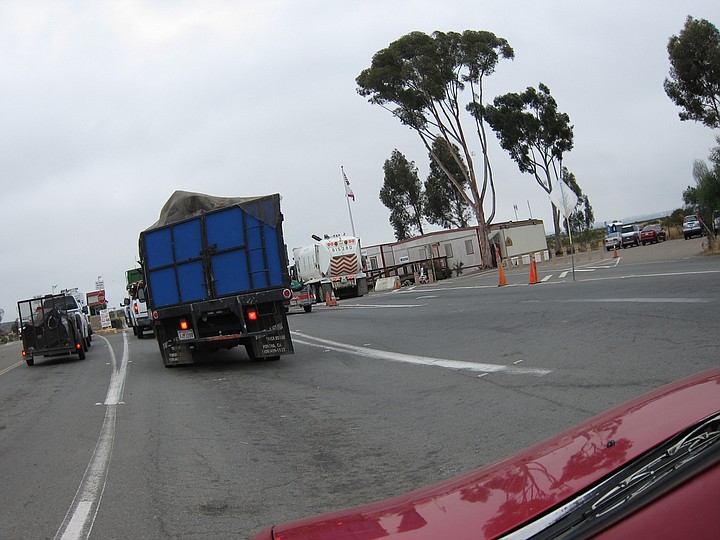
One last measure deals with hours of operation. It's proposed by October 1, 2018, to eliminate operation during Sundays and three summer holidays: Memorial Day, Independence Day, and Labor Day. The landfill is currently closed on New Year's Day, Easter, Thanksgiving, and Christmas Day.
The September 7 hearing was attended by 16 people, including three hearing-board members and mainly other city and county representatives.
Paula Forbis, senior deputy counsel with the county, gave a concise review of the city's action plan anticipated to be finalized this week in a stipulated agreement.
The city council will meet behind closed doors about this agreement on September 19. Depending on how that goes, the city will either present the stipulated agreement at the September 21 air pollution control hearing or the original nuisance-abatement hearing, continued from May, will finally be heard.
Forbis said the stipulated agreement would be in effect from adoption to May 1, 2019.
Hearing-board member Nicholas Tonner asked how far along the agreement was. Forbis said it was maybe 98 percent complete, saying they had been hashing it out as late as 3:30 p.m. the day before.
The representative from the city attorney's office, Amanda Guy, said that everything has been worked out except for the November 30, 2017, deadline for the first phase of the gas-collection-system expansion. Guy said the hitch is related to previously unknown issues raised by the contractor within the past few days. A boardmember asked how far off the deadline might veer. Guy said it would probably only be weeks but couldn't say definitively.
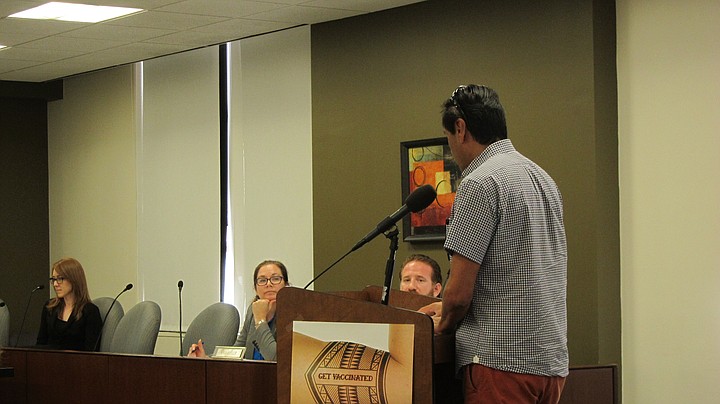
There was only one public speaker, Adrian Bustos, a University City resident who also works in that area. He asked about what was missing from the city's ten proposed measures — the composting operation. In 2016, the city identified the composting operation as a source of odors.
Forbis said the composting operation wasn't included in the action plan because the air pollution control district doesn't have jurisdiction — jurisdiction for composting odors lies with the city's local enforcement agency.
Bustos asked why the air pollution control district isn't involved, being that it's the same air, the same air pollution. Forbis said it's a quirk of state law where composting operations were removed from the jurisdiction of local air quality control districts in California.
Sierra addressed the composting issue by telling Bustos of plans to replace the antiquated open windrows composting system with a covered aerated static pile system that has the ability to capture odors that then go to a filtering system. It's currently in the design phase.
"So I do want to make sure that people understand that though the focus with the [air pollution control district] is focused on odors coming from the landfill operation, the city is focusing on the entire operation," said Sierra.
Local enforcement agency documentation for the last couple years showed no composting violations. Consistent concerns seem focused on the gas-collection system and how trash is covered. Inspections in June and July noted a grading violation and concerns about excessive gas concentrations.
After the hearing, I spoke with Robert Kard, an air pollution control district officer. He clarified that the stipulated agreement won't give the city a pass on making nuisance odors. Complaints could still lead to investigations that lead to violations and citations.
Another air pollution control district employee said they learned a lot from the Sunshine Landfill in Los Angeles that went through a similar situation. The city has borrowed some of their fixes, including the Enviro Cover.
On the way out of the county's administration building, Bustos said that while the city's ten measures sound good, he's concerned they might just be band-aids. He equated it to how the city paves a street like new and then shortly after lets it be dug up and shoddily patched about 20 separate times. Bustos wishes the city would think and plan more long-term. Bustos, originally from Mexico, has been here for more than 25 years and said he has seen San Diego making "the same stupid mistakes that third world countries make."


With the post-summer wind direction about to shift from east to west, the city and county are working overtime to solidify a plan to quell odor complaints that skyrocket between November and April against Miramar Landfill. Proposed measures have deadlines ranging from September 2017 to February 2019.
The proof of how well early measures work may be known this Thanksgiving if downwind residents who lodged complaints in 2016 do not do so again this Thanksgiving.

The Miramar Landfill opened in 1959 — operating the southern portion until 1973 (14 years), the northern portion from 1973 to 1983 (10 years), and the current western portion, still in operation, opened in 1983 (34 years and counting). The landfill has had substantially more complaints in the past couple years than in the past several decades, said the city.
Complaints that poured into the air pollution control district in 2016 led to a citation against the city for nuisance odors. The citation was settled in July 2016 via the city cutting a $15,000 check to the county.
More complaints followed once the winds changed direction that fall, which led to a May 2017 nuisance abatement hearing.
At the May hearing, the air pollution control district hearing board told the city to come up with a plan to quell odors. Boardmembers stated, after hearing residents speak, it was obvious that something changed three years ago and the city's job was to figure out what that was before the winds changed directions. The city was ordered to appear again in July for a status update and the abatement hearing was continued until August.

At the August status update, Mario Sierra, director of the city's environmental services department, presented key conditions to be incorporated into a stipulated agreement between the city and county — meant to stave off that abatement-order hearing.
Half of the ten key conditions are landfill-gas-related. One condition assures all future contracts will comply with environmental laws (deadline: January 1, 2019). A proposed two-phase expansion of the landfill gas-collection system would nearly double gas collection by December 31, 2018 — the idea being that more gas moving through the system equals less odors.
Another condition is the possibility of integrating the gas-collection system of an adjacent property into the Miramar system (a report on this is due December 31, 2017 — if moving forward, a filed application is due January 31, 2018).
By December 31, 2018, the city promises to evaluate the integrity of the gas-collection system and advise the county on an action plan by February 28, 2019.

Four of the ten measures involve how landfill waste is covered. Beginning this year, from October 15 through May 1, the city will ditch the newer pancake-lift method (which compacts trash in flat horizontal stackable “pancakes”) for the formerly used slope-fill method (which covers trash with dirt on slopes) — the latter reduces the surface area of exposed waste and thus odors. The pancakes will return between May and October.
Beginning September 30, the city will only use recently purchased tarps to cover the landfill. No later than January 31, 2018, a new Enviro Cover System will be used between October 1 and May 1. The city will use dirt with the new tarps.
Enviro Cover is a one-use tarp system applied anew nightly. The next morning, new trash is dumped atop the thin tarps, which are designed to biodegrade easily — though promises to be impermeable for its one time use.

One last measure deals with hours of operation. It's proposed by October 1, 2018, to eliminate operation during Sundays and three summer holidays: Memorial Day, Independence Day, and Labor Day. The landfill is currently closed on New Year's Day, Easter, Thanksgiving, and Christmas Day.
The September 7 hearing was attended by 16 people, including three hearing-board members and mainly other city and county representatives.
Paula Forbis, senior deputy counsel with the county, gave a concise review of the city's action plan anticipated to be finalized this week in a stipulated agreement.
The city council will meet behind closed doors about this agreement on September 19. Depending on how that goes, the city will either present the stipulated agreement at the September 21 air pollution control hearing or the original nuisance-abatement hearing, continued from May, will finally be heard.
Forbis said the stipulated agreement would be in effect from adoption to May 1, 2019.
Hearing-board member Nicholas Tonner asked how far along the agreement was. Forbis said it was maybe 98 percent complete, saying they had been hashing it out as late as 3:30 p.m. the day before.
The representative from the city attorney's office, Amanda Guy, said that everything has been worked out except for the November 30, 2017, deadline for the first phase of the gas-collection-system expansion. Guy said the hitch is related to previously unknown issues raised by the contractor within the past few days. A boardmember asked how far off the deadline might veer. Guy said it would probably only be weeks but couldn't say definitively.

There was only one public speaker, Adrian Bustos, a University City resident who also works in that area. He asked about what was missing from the city's ten proposed measures — the composting operation. In 2016, the city identified the composting operation as a source of odors.
Forbis said the composting operation wasn't included in the action plan because the air pollution control district doesn't have jurisdiction — jurisdiction for composting odors lies with the city's local enforcement agency.
Bustos asked why the air pollution control district isn't involved, being that it's the same air, the same air pollution. Forbis said it's a quirk of state law where composting operations were removed from the jurisdiction of local air quality control districts in California.
Sierra addressed the composting issue by telling Bustos of plans to replace the antiquated open windrows composting system with a covered aerated static pile system that has the ability to capture odors that then go to a filtering system. It's currently in the design phase.
"So I do want to make sure that people understand that though the focus with the [air pollution control district] is focused on odors coming from the landfill operation, the city is focusing on the entire operation," said Sierra.
Local enforcement agency documentation for the last couple years showed no composting violations. Consistent concerns seem focused on the gas-collection system and how trash is covered. Inspections in June and July noted a grading violation and concerns about excessive gas concentrations.
After the hearing, I spoke with Robert Kard, an air pollution control district officer. He clarified that the stipulated agreement won't give the city a pass on making nuisance odors. Complaints could still lead to investigations that lead to violations and citations.
Another air pollution control district employee said they learned a lot from the Sunshine Landfill in Los Angeles that went through a similar situation. The city has borrowed some of their fixes, including the Enviro Cover.
On the way out of the county's administration building, Bustos said that while the city's ten measures sound good, he's concerned they might just be band-aids. He equated it to how the city paves a street like new and then shortly after lets it be dug up and shoddily patched about 20 separate times. Bustos wishes the city would think and plan more long-term. Bustos, originally from Mexico, has been here for more than 25 years and said he has seen San Diego making "the same stupid mistakes that third world countries make."
Comments